Green Pest Management
Keep Your Home Critter-Free Without Poisons
Pest – the name says it all. Just like a little brother wanting to crash his big sister‘s evening out with friends, pests are annoying, persistent, and often destructive. At the worst of times household pests make us want to wrap our houses in plastic and inject the world’s most deadly poison inside just to get enough peace of mind to have a full night’s sleep. Why don’t we? Well, we don’t want to kill our pets and make our families sick, of course. We know pesticides are nasty. Luckily, there are other strategies – safer both for our families (pets included) and for the environment – to rid ourselves of pests indoors and out.
Know Thine Enemy
Pests are living things. They’re looking for food and shelter to survive and reproduce, and the fine suite of options we offer them with our storage areas and compost bins, full of dust bunnies and food scraps, are very enticing. Understanding who our unwanted house and garden guests are and why they are there will get to the root of the problem.
That’s why the first two steps of integrated pest management are to inspect and to identify. That’s right, it’s not just about eradication! I’ve taken the liberty of identifying my least favorite roommates (although the biologist in me thinks they’re pretty neat when they’re not in my apartment).
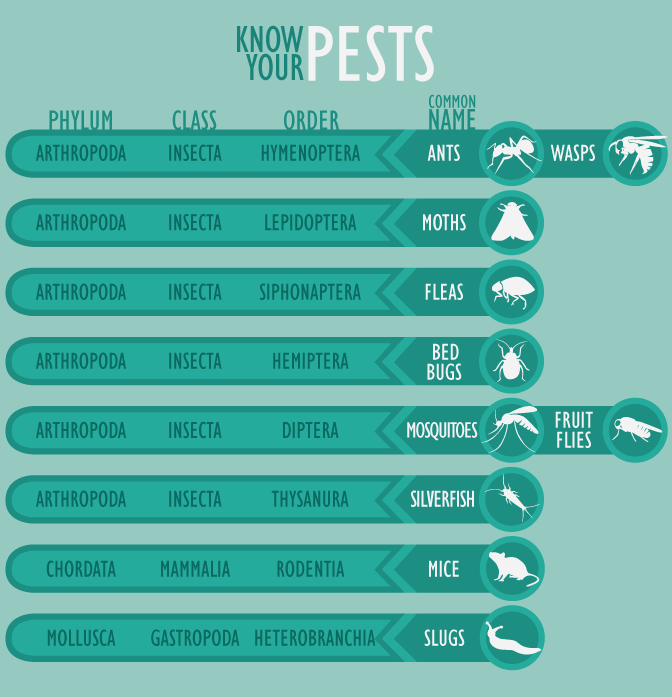
During your inspection, look for clues as to what kind of pest you’re dealing with. If it’s rodents, you’ll see chewed items and telltale droppings; insects may leave signature bites on your skin; slugs leave trails.
Always wear gloves when dealing with rodents; disease transmission is a serious concern. If you’re not sure what you’re dealing with or how widespread of an issue it is, try glue traps. You’ll be able to catch some specimens and head online to compare them to a vast repository of pest images (Pest Control Canada is my favorite). It’s important to know exactly what you’re dealing with to plan and treat effectively. There’s no sense wasting time and energy trying to eradicate fleas when you’ve got flies.
It‘s a Trap
Now that you’ve identified the problem and the problem area, you can move on to the next two steps: plan and treat. While I’m sure we’re all seeking complete eradication, is that realistic in your situation? A mouse- and slug-free neighborhood is unlikely, but a 95 percent slug-free garden might do the trick. On the other hand, bed bugs need to be 100 percent gone. To focus your efforts, outline your goals and your time frame before you start treatment.
When it comes to treatment options, you have two main types at your disposal: mechanical and chemical (and combinations thereof). Mechanical treatments are physical barriers that separate the pests from you or your property (bug nets, wasp traps) or treatments that kill the pests on location (mouse traps, bug zappers, cleaning). Traps are generally safe for your family, although setting up a mouse trap requires a light and confident touch.
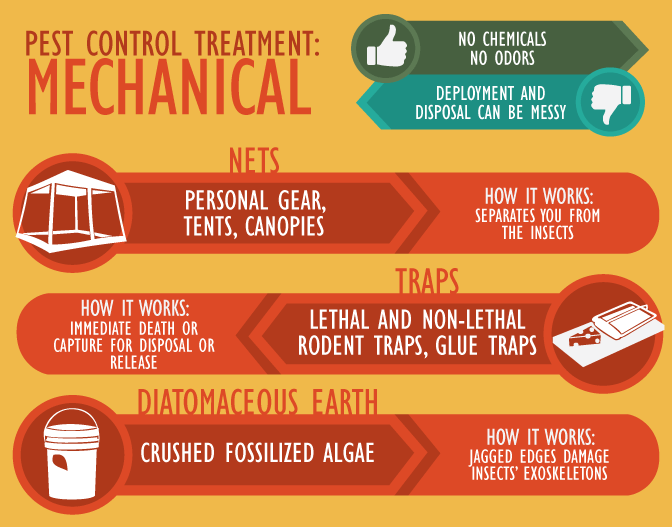
Sugar, Sugar
Many of these mechanical solutions, however, work best in conjunction with chemicals that act as attractants or killing agents. Keep in mind that chemical doesn’t equal hazardous, toxic, or poisonous. Sugar is a chemical, as is water. Chemicals can be derived from natural sources or artificially made, and their safety depends mostly on the chemicals‘ composition and the dose used. Some chemicals are lethal in minute concentrations, whereas substances that are usually innocuous can be toxic in extreme amounts. Some will affect mammals and insects, while others might only work on one particular bug. We’re looking for the holy grail of pest control: chemicals that are not toxic to humans, pets, or the environment, but that deter or attract and kill pests. The most common are plant oils, enzymes, and plain old soap and sugar water.
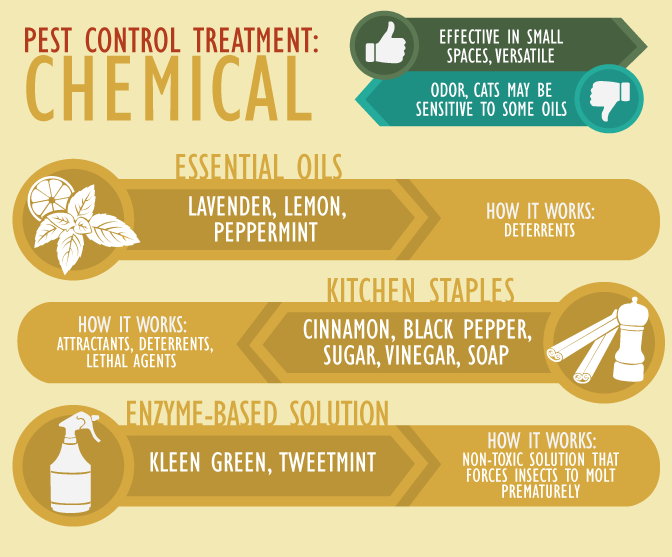
So, now that we have some strategies in mind for overall green pest control, let’s see what we can do about our least favorite pests.
Wasps
You’ll never get rid of all the wasps, but you can put up wasp traps to keep them at bay. Just make sure you don’t put them near you! Instead, make a perimeter that will keep them away from your backyard barbecue. If you have a nest, be very careful; tackle it at night, when wasps are less active. Only do so if you feel comfortable; it’s important to know your limits. Bowls can be easily placed over ground nests to contain the problem. Exposed nests can be very carefully and confidently covered with a bag then submerged in water.
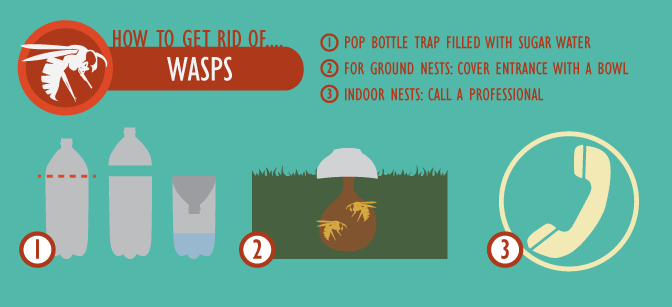
Bed bugs
Without doubt, my least favorite on the list. Bed bugs mostly live in your mattress, but they can easily spread to bedding, furniture, and curtains. Your best hope to avoid sleeping on a bed of chemicals is to clean, clean, clean with heat, heat, heat. Steam clean your mattress and wash what you can in very hot water – and then do it again. Vacuum the carpets and safely dispose of the contents, then spread diatomaceous earth along your baseboards and spray everything you can with an enzyme-based product.
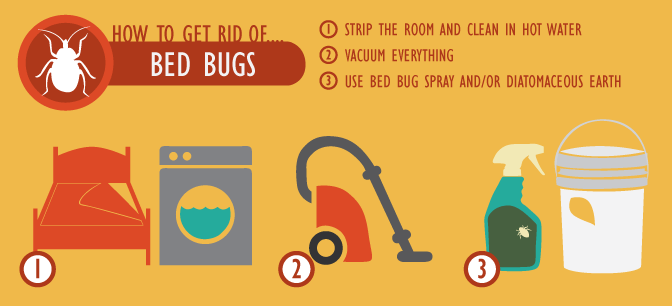
Slugs
There are a lot of solutions out there for these garden pests, so pick your poison! Mulch salty seaweed into your soil; attract them with beer in a bowl; sprinkle diatomaceous earth around your plant beds; or even erect an electric fence. But before you try those, try something simpler: water your plants in the morning. Slugs are much more active in damp conditions on damp soil, so don’t give them what they want.
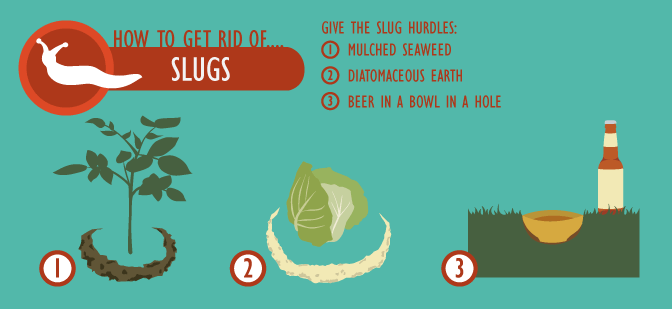
Ants
Ants are always on the move, and they usually follow trails. Try blocking their path with diatomaceous earth or spraying it with essential oil-based sprays of lemon or peppermint (a few drops will go a long way) to get them off their track, which is based on scent. Even cinnamon and cayenne might turn them around. If you have an ant nest outside, you can use the tried and true boiling-water-down-the-hole trick, but you might need to do it a few times until you slay the queen.
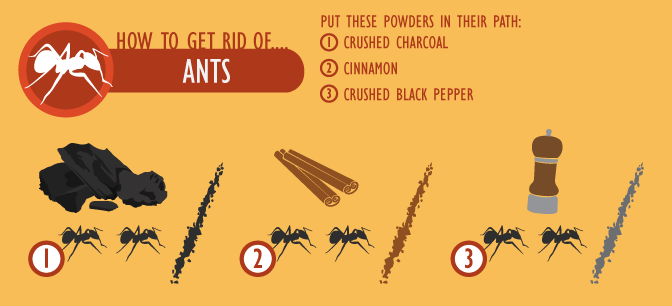
Mice
They are so cute in movies, but so unwelcome in attics. Lethal and non-lethal traps are always effective with the right bait (peanut butter is the usual go-to), but you can also roll the dice on a cat and hope you get a mouser. Plugging possible entrances with cotton balls soaked in peppermint oil is hit-and-miss, but certainly worth a try.
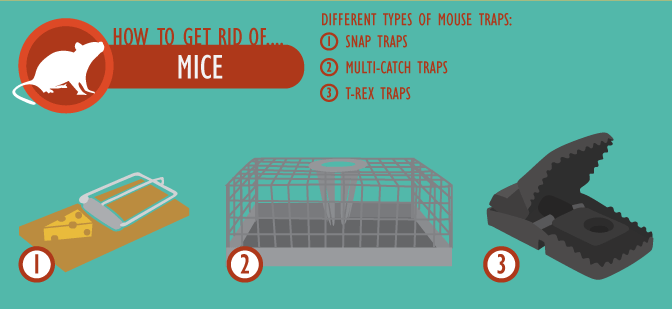
Fruit Flies
These flies seem to come out of nowhere in no time, but they’re really just looking for a sweet and sour treat. Simple homemade traps using vinegar (apple cider works best) and some rotting fruit in a jar are a must-have on the kitchen counter in the summertime.
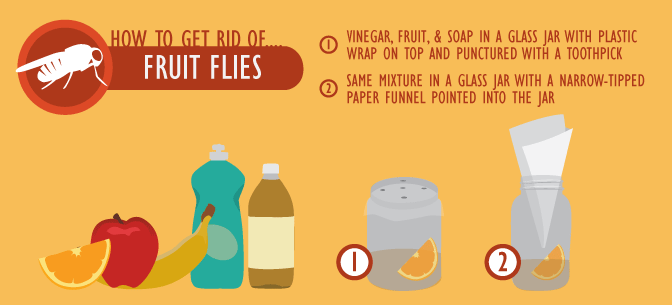
Moths
What’s worse – putting on a moth-chewed sweater, or a moth-balled one? It’s a trick question; they’re both awful. It’s time to exchange your naphthalene for the much more pleasant aromas of cedar, lavender, and rosemary. Sachets of cedar chips and dried herbs and citrus make lovely aromatic bundles for drawers and closets that also keep moths away.
Fleas
Fleas are tricky because, while they’re often associated with pets, they can also live in furniture and carpets. You’ll likely know when you have fleas if you’re scratching as much as your dog. Enzyme-based sprays are the safest bet, but you can also try cedar or lavender oil or diatomaceous earth to keep them away. Keep a fragrant sachet below your dog’s bed to up the freshness and prevent further episodes.
Silverfish
Silverfish usually come out at night from the tiniest of cracks and crevices. Unlike ants, they don’t follow a trail; they run around in all directions on rugs and carpets looking for grub. Vacuuming them up is a temporary, albeit satisfying solution. I also like to stuff any gaps in the walls with diatomaceous earth and use lavender- or citronella-soaked cloth strips to keep them off the counters.
Mosquitoes
Is there a miracle technique to deal with mosquitoes? I’d like to say yes – but I’ve never achieved complete success, because it always seems like there’s an endless supply. Essential oils like citronella and mint can be effective as ingredients in natural bug sprays. Lemongrass and garlic are popular, too. A combination of techniques is probably your best bet: a screened-in tent, a little extra garlic for dinner, and a citronella, rubbing alcohol, and water spray for good measure.
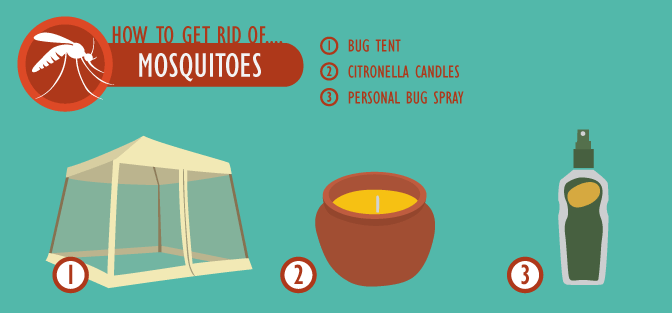
Calling in the Professionals
The fifth and final part of your pest strategy is monitoring. Keep an eye on things and make adjustments as you see fit. Be patient, but not too patient. If you aren’t getting satisfactory results, switch it up and try a new method. These tips and tricks work well for small issues, but pest problems are often bigger than we think. If things are truly out of control, there’s no shame in calling for help. You might think the pest control industry is a pesticide-loving, spray-happy industry, but they’re impressively progressive. They know more than you ever could (or, let’s face it, more than you would ever care to know) about the pests in and around your home and how to deal with them. They also know we don’t want to poison our families. So, use your newfound knowledge to find a pest control company that uses methods you feel comfortable with.
A Pound of Prevention
Even your pest control company will tell you that there’s a secret to keeping pests at bay – prevention. Take away the comfy hideouts (standing pools of water, unwrapped sleeping bags), clean up the food scraps and the dust bunnies, and keep your eyes open for signs of visitors. But pick your battles and learn to appreciate the good guys. Bees, spiders, dragonflies, crickets, centipedes – these are nature’s pest control agents. And they’re more than happy to do the dirty work for you, if you’ll let them.
Embed the article on your site

